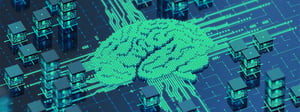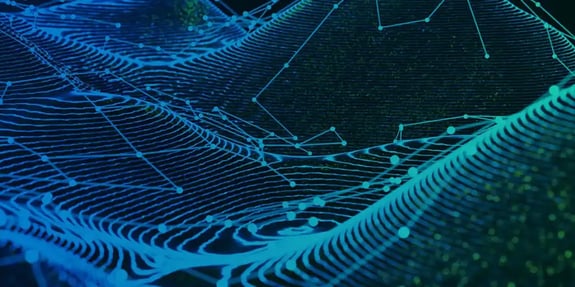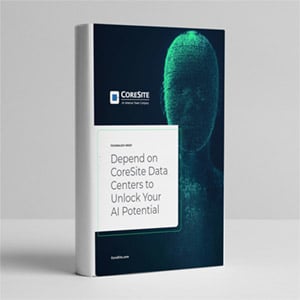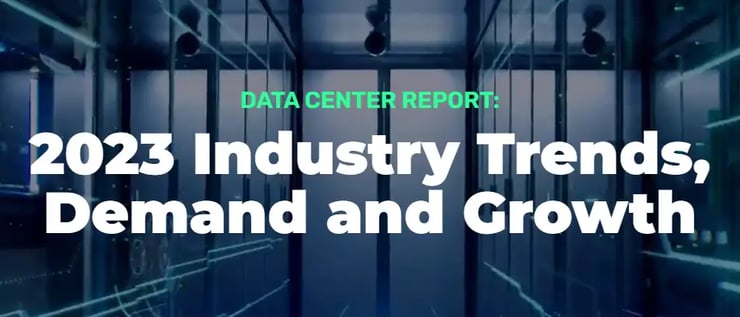
2023: The Year of the AI Gold Rush
The artificial intelligence gold rush is on! The overall excitement and buzz are something I have not experienced since the advent of the internet.
The widespread availability of generative AI clearly was one of the most important events of 2023. And like a boulder thrown into a pond, the waves that resulted are rolling far and wide.

In this look back at 2023, I’ll touch on how AI has affected the data center industry and of course CoreSite. I’ll also take a stab at what 2024 might bring, although the past few years have been anything but predictable.
My blog at this time last year was generally about the changes the world experienced due to COVID. At the time, the rate of infrastructure transformation was as fast as we had seen. I think we are experiencing an order-of-magnitude increase in that rate. I’ll add that it’s also a period where everyone is learning – even AI models – about AI’s potential, good and bad.

The latest developments in artificial intelligence have spurred an incredible amount of infrastructure investment. That’s because training foundational AI models requires a massive amount of compute capacity. As those models get rolled out at scale for customer use, the inferencing (running live data through a trained AI model) will rely on network fabrics that have the capacity to quickly and inexpensively enable enterprises to query AI models with amazing amounts of low-latency data transfer – volumes that were unimaginable even just a couple of years ago. This allows enterprises to securely process and more quickly analyze data closer to the point where it is created.
AI development also has inspired an explosion of AI-relevant application and services companies. I recently saw that there are more than 14,500 AI-specific enterprises in the U.S. and that the number has more than doubled since 2017.1 CoreSite customers are in that group. They are developing autonomous electric vehicles, streamlining content creation, and accelerating healthcare research and development. There’s a company which offers AI-based video analytics that improves safety in hazardous work environments while cutting review time by 98%. They also provide intelligent video solutions for physical security and logistics optimization. These are just a few of the apparently limitless AI use cases improving businesses in production today.
What AI Means for Data Centers
I’m often asked, “How will AI impact your business?” Evolving data center design is a reminder that AI is not an ethereal thing. AI is capital, concrete, steel, generators and HVAC systems. It’s raised floors, servers, switches and fiber optics. And it’s the people who work around the clock to achieve operational excellence, as well as those innovating to keep energy consumption aligned with sustainability goals.
Data centers need to be purpose-built for the higher power density required to support the AI GPU microchip evolution – with its concomitant increase in heat generated by high-performance computing environments. CoreSite has been building data centers in anticipation of such requirements all along which, aside from higher standards of power density, also include the network connectivity and edge compute fabric required to ingest, process and disseminate massive amounts of data.
Here are some examples of how AI is being applied to the data center construction process. One part of the first phase of building a data center is to develop what is called a “30% spec,” which is a general drawing of the proposed facility that takes about 90 days to develop. I recently met with a company training an AI model with construction data so that the time for generating a 30% spec could be reduced to a handful days instead of months.
Another instance of applying AI in data center construction is performing computational fluid dynamics analysis to determine the airflow required to cool a deployment within a given computer room. For some customers, it is so complex that we outsource the task. Thanks to supercomputing and AI, the analysis can be done in a matter of minutes instead of days. The outcome enables optimizing deployments even more than we have been able to, and frankly, we are very good at airflow optimization. Furthermore, improvements add up to better power usage effectiveness (PUE) and lower energy consumption for the ecosystem of enterprises in the data center.
Funnels for Data and Hubs for Interconnection
This year gave us insight into the incredible volume of data that generative AI creates and the criticality of the supporting infrastructure for providing virtually instant access with ultra-high levels of availability. In our industry, latency and availability are obviously the top talking points. I suggest we, as an industry, look at networks as Autobahns: There is no speed limit (almost, the laws of physics still apply). The challenge is building faster vehicles. You might have seen announcements in 2023 from CoreSite about the launch of connections capable of up to 50 gigabits per second via our Open Cloud Exchange with Oracle Cloud Infrastructure, Google Cloud and AWS. A fabric with 50 gigabits per second performance is remarkably fast, I’d say.
We are learning from customers that data integrity, availability and speed are critical to machine learning and analytics. You need quality as well as speed, and real data from as many endpoints as possible. More than ever, colocation data centers are hubs in the data processing mechanism. They serve as a funnel for data collection through private networks (helping to ensure data governance and eliminate data silos) and offer a place where both AI and non-AI workloads can cost-effectively operate.
Consequently, more attention has been given to network connectivity in data centers. There’s new emphasis on interconnection across a highly distributed architecture and direct connection to hyperscale clouds.
Edge data centers are finding a place in the fabric, which begs the question: “How can AI be enabled at the edge and for what applications?” One answer is by providing a conduit that enterprises near the edge data center can use to transfer data from clouds (hyperscale and/or in upstream facilities such as a CoreSite data center) to edge end points. For example, some manufacturers are challenged by the fact that the firmware installed during production is outdated by the time products reach the end of the process. One use case showing how this challenge can be met is automotive manufacturers utilizing edge capabilities to transmit software updates across an entire fleet of vehicles at the final point of assembly, before they are shipped to dealers.
Coopetition in the Data Center Industry
Digitization has not only changed the way the world operates, it elevated awareness of, and dependance on, data centers. CoreSite is one of many elite data center providers. We compete daily with Digital Realty, Equinix, Flexential, Iron Mountain and others – yet recognize that ensuring that the digital infrastructure works for the common good defines winning. I’m talking about a sense of purpose and shared responsibility for the entire data center industry.
Building highly distributed data center capacity is integral to living up to the responsibility. In December 2023, we announced the expansion of our New York and Denver data center campuses. NY3 will be an 85,000-square-foot facility with 15 critical megawatts (CMW) of capacity and is on schedule to be complete in 2024. We also received conceptual approval for a three-building data center campus development of approximately 600,000 square feet and 60 CMW of capacity in Denver, adding to the two data centers already operating there.
I’m proud to be part of a company that is ideally positioned to capitalize on 20 years of data center industry “training” and can support emerging use cases without retooling the platform we’ve built. This is the labor of what we call future-proofing our infrastructure and capabilities. I am even more proud of our team, an exceptional group of people who understand that their work truly matters and will set the stage for what comes next.
Along that line, if there’s anything proved in 2023, it is that predicting what is next is difficult. However, I will dare to say that the merging of physical and digital space is a probable next step. Widespread augmented reality will require real-time data sharing to create interactive experiences, enabled by “NextG” wireless (private and public) and wired network convergence. How the edge will play into it is yet to be identified. However, we have come full circle in this discussion, back to the fact that networks, data centers, intelligent technologies and the people who conceive and implement them are shaping a better world.
Welcome to 2024, the second year of the AI gold rush!








